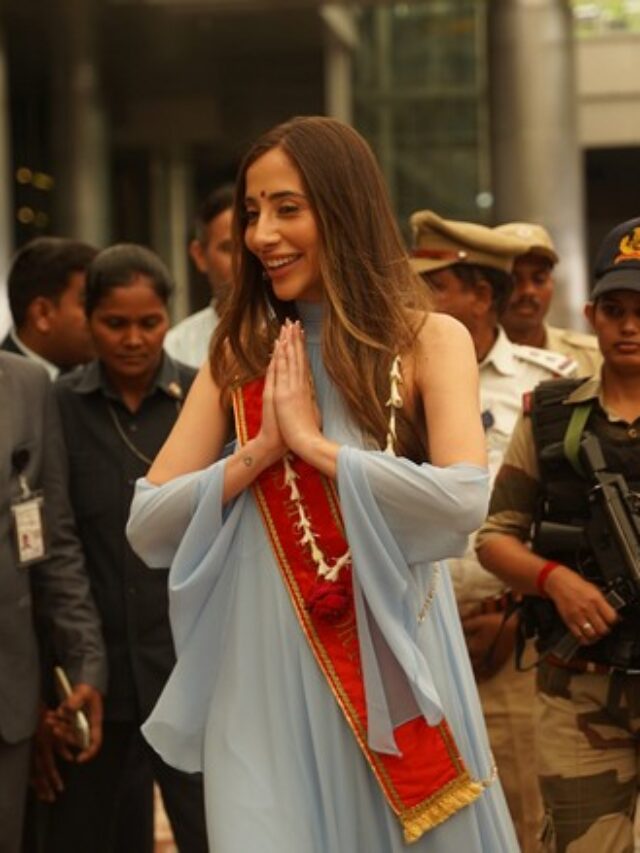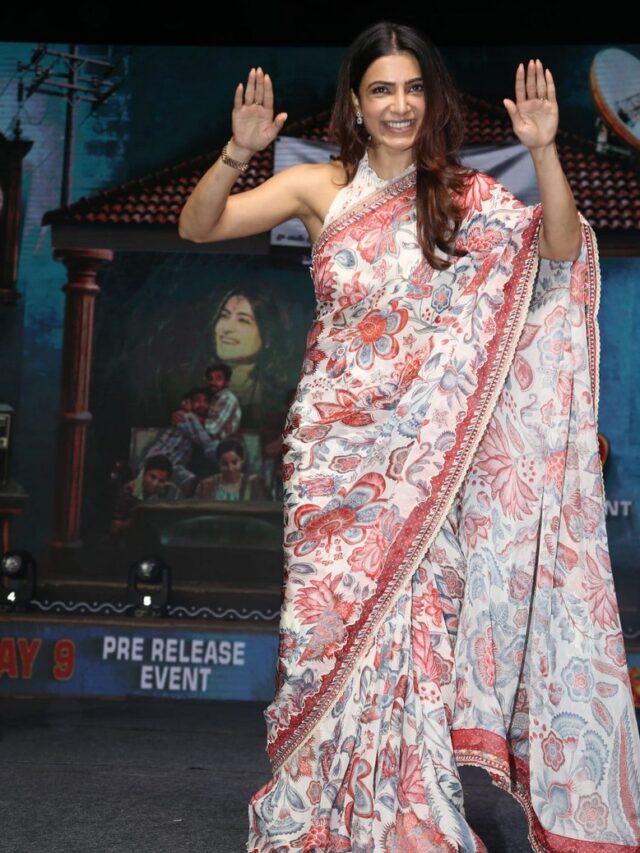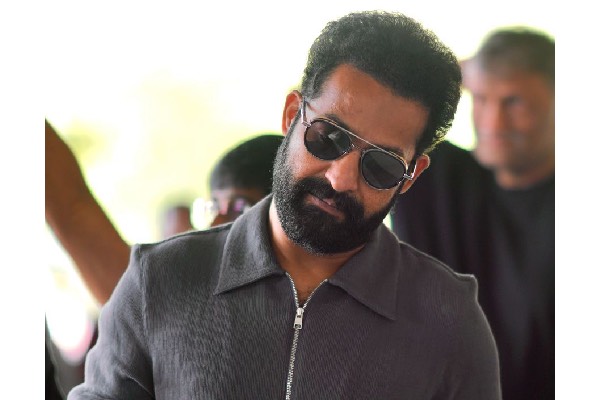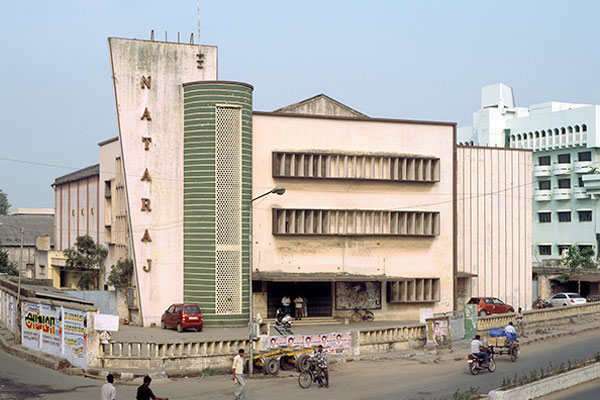A generation of movie buffs in Mumbai will go on a nostalgia trip and, a rather melancholic one, following the news of the impending closure of the citys iconic, Regal Cinema. So many cinema halls in Mumbai and other metros have downed shutters over the last decade or so. These single screen cinemas enjoyed iconic status and all drew their loyal audience. A film drew as much crowd as a particular cinema just for its ambience. Like all cities, Mumbai too had its cinema belt where the prominent cinema halls were situated within few hundred meters of each other.
In Mumbai, this belt started from Opera House, covering the entire Lamington Road extending till Bombay Central. Movies were not listed in newspapers and if you missed the chosen film, the option was right next door in another cinema hall! The stretch, for instance, boasted of Opera House, Roxy, Imperial, Naaz, Swastik, Novelty, Minerva, Apsara ending with Maratha Mandir. All these cinema halls had celebrated many silver and golden jubilee hits.
Also on the closed list are Ganga Jamuna at Tardeo which started the trend of twin screen cinemas. Imperial Cinema for instance, was a dilapidated old house. But, one film, least expected to succeed, Zanjeer, opened here and ran for 50 weeks. A film with merit could give a new lease of life to a cinema hall. Right next door was the landmark Naaz Cinema, which also housed the offices of the top rung film distributors of Bombay Circuit. The owner was keen on maintaining the cinema but the patronage changed gradually from family gentry to riff raff and sex workers from the neighbouring red light areas.
These women would use the choicest of cuss words, spit right next to or below the seat while chewing on paan! Once, watching a film as an assignment, I ended up sitting right behind them. After a while, I stood up and watched the film standing near the exit. One could hardly expect the regular audience to frequent such a cinema after this. There were two more cinema halls on the back road from Lamington Road, Central and Majestic.
Then there was this Diana Cinema at Tardeo, the heart of Bombay. It screened only old films, re-runs. The ticket rates started from two annas (bench seats) to 12 annas. Which did not rise much even with time. Remember watching a film when the city was flooded. The stalls were closed due to flooding and the balcony was still open to patrons! The show must go on?
Many of these cinema halls would have cashed in on their properties instead of watching the empty halls. At the cinemas where black marketing of cinema tickets was once rampant, there were now no buyers even at the booking windows!
What stopped them was the illogical government stand. Initially, there was an embargo on cinemas closing down and putting the property into more lucrative use. Later, the law was changed to develop the property but the new construction should house at least about 400 sitter hall. So what happens? Find a loophole. And, that is what the cinema owners did. For instance, Majestic was redeveloped into a commercial complex with a cinema hall accommodated as per the law. However, a local politician was ‘used’ to raise objections about the newly built hall. These pertained to exit areas, fire hazard and so on meaning this hall was not safe for patrons!
Similarly, Lotus cinema at Worli was also turned into a commercial property. So far, no such cinema halls are known to operate at either venue. So much for the government rules. The South of Bombay had a number of cinema halls screening mainly English films. They thrived, though in those days even a metro like Bombay had few takers for foreign films and they were released only at one screen. (Now, foreign movies get a similar release to Hindi films with multiple screens.)
Some of these English cinema halls also would like to opt out but, again, a policy regarding old structures stops them. Cinema halls like Regal, Metro, and Eros etc come under Heritage Sites and can’t be brought down. At least, their outside façade has to remain intact. So, in keeping with the trend, Metro was converted into six-screen multiplex making alterations within and keeping its façade untouched. As a single screen, the cinema had the biggest seating capacity in Bombay of about 1,500 and was not finding enough patronage to fill up anymore!
That was an era of confirming the main cinema first before booking the chain (other suburban cinemas) which usually ran a movie for a week or two. The main cinema had to be on prime location and that happened to be between Opera House and Bombay Central. The rest of the cinema halls were spread out to cater to each locality or a suburb so as to make a film available to the whole city. In all, there would be 16 to 18 screens (nowadays, a single multiplex screens so many shows or more per day!). The films enjoyed long runs. Now, the concept of main cinemas is over. And, from the release strategy adopted now, it would seem like South Mumbai audience was not interested in watching movies at all!
So what killed single screen cinema? Mainly, it was government policies. It was all one way street between the governments and the exhibition trade. The cinemas were taxed on all fronts with nothing in return. Imagine, in an age when there were no other avenues for entertainment except the cinema, the film tickets were charged 100 per cent or more entertainment tax. That is to say, the government took away more than the theatre did of the collections.
Then, it was compulsory for all cinemas to screen a Films Division documentary feature at the beginning of a film. These features were mainly the propaganda vehicles for the government. And, no. The theatres did not get paid for this service; in fact, the theatre had to pay 1 per cent of its full house capacity (not 1 per cent of the collections) to the Films Division so what if the film was not drawing enough footfalls. Yet, the government stopped you from closing the cinema!
The worst rule was that, each cinema management needed to renew as many as 22 licences every year! Yet, the exhibition trade survived because the film lovers flocked to the cinema halls. The cinemas faced one after the other hurdle. Starting with television which ate into to cinema audience every Sunday by, not surprisingly, telecasting Hindi movies! But, another blow was yet to happen. That was the arrival of the video format. With video came piracy and, the governments of various states failed to use their law enforcing agencies to curb piracy.
Then came the turn of the multiplexes to tighten the screws on the single screen cinemas. Even while the single screens were striving for survival, various governments promoted the onset of the multiplex culture. They were offered tax holidays (no entertainment tax) for three to five years. And, so much more. And, nothing for the single screens to compete or, at least, survive. They continued to pay high entertainment taxes and other taxes. There was no way the single screens could take this onslaught.
The result is for all to see. Cinema halls with glorious past now stand like haunted structures, empty. There was no option for the cinema managements but to close down and sit on unproductive properties. The plight of the single screens is not limited to Mumbai alone. It is the same all over in the metro cities as well other cities.
About the status of single screen cinemas in Delhi, almost all cinemas in Connaught Place have turned into multiplexes – Plaza, Rivoli, Odeon and Regal are under conversion. Nataraj (Moti Nagar) has converted into a multiplex by Cinepolis (earlier it was Fun Cinemas). Among the first ones to convert into multiplexes were: Anupam (Saket- now PVR); Priya (Vasant Vihar-now PVR; Kumar (Chandni Chowk- now Abhishek Cineplex); Chankaya (Chankyapuri- now PVR); Payal (Naraina- now PVR); Alankar (Lajpat Nagar – now 3Cs); Sonia (Vikas Puri- now PVR); Satyam (Patel Nagar- now Inox Cineplex).
Golcha, Majestic and Uphaar still stand as unused buildings. A few made way for Delhi Metro like Vivek (Patel Nagar). The single screens which are still braving the odds are: Liberty, Delite, Amba, Milan, Ritz, Moti, Shiela, and, may be, a couple more.
In Kolkata, again, the list of single screens which had to down shutters is long and include: Mitra, Radha, Orient, New Cinema, Jyoti, Lotus, Elite, Opera, Minerva, Lighthouse, Globe, Tiger, Jamuna, Purna, Bharati, Ujjwala, Malancha, Bunty, Madhuban, and Mahua. Hind Palace has been converted into Hind Inox while negotiations are on to convert Metro into a multiplex.
But, finally, one single screen that has changed into a more lucrative business than what it managed in the era of single screens and now doing better than multiplexes monetarily is Mazda Cinema, Varanasi. The cinema was brought down and converted into a parking lot. Located at a vantage point and very close to the Dashashwamedh Ghat (where the vehicles are not allowed access), it is always full. And, probably, doing better business now than ever before!
@The Box Office
*Malaal, a remake of the 2004 7G Rainbow Road, came up with a mundane love story, much dated and with a title that could not quite excite the audience. Though coming from the house of Sanjay Leela Bhansali, the film failed to create expectations. The collections hovered around Rs 2.5 crore in the first week.
*Article 15 has belied all expectations and continued to do well even during its second week besides being lauded generally. The film has added about Rs 18 crore in its second week to take its two week tally to Rs 51.5 crore.
*Kabir Singh has emerged as a blockbuster. The film put together Rs 35 crore for its third week to take its three week tally to Rs 244 crore.


































